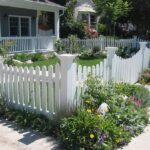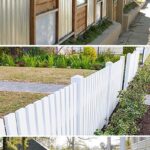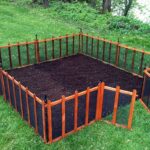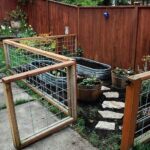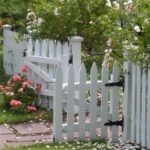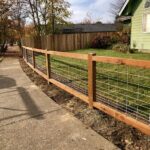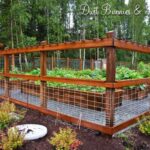As an Amazon Associate I earn from qualifying purchases.
Garden fencing serves as both a practical and aesthetic addition to any outdoor space. It provides security, privacy, and can enhance the overall look of your garden. With so many options available on the market, choosing the right garden fencing can be a daunting task. To help you make an informed decision, here is the ultimate guide to choosing garden fencing.
1. Determine your needs: Before choosing a garden fence, assess your needs and objectives. Are you looking to create a boundary around your property? Do you need to keep pets or children safe? Are you aiming to enhance the visual appeal of your garden? Understanding your requirements will help you narrow down your options.
2. Consider the purpose: Different types of garden fencing serve different purposes. For security and privacy, opt for solid fencing such as wooden panels or concrete walls. If you’re looking to keep pets or children safe, consider a fence with small gaps between posts to prevent them from escaping. For decorative purposes, pick a fence with intricate designs or add climbing plants for a more aesthetic appeal.
3. Choose the right material: Garden fencing comes in a variety of materials, each with its own set of pros and cons. Some popular options include wood, vinyl, aluminum, and wrought iron. Wood is a classic choice that offers a natural look, but it requires regular maintenance. Vinyl is low-maintenance and durable, while aluminum is lightweight and resistant to rust. Wrought iron is a strong and elegant option but can be expensive.
4. Determine the height and style: The height and style of your garden fence will depend on your personal preferences and the overall aesthetic of your garden. Taller fences provide more privacy and security, while shorter fences are ideal for decorative purposes. Choose a style that complements the architecture of your home and the landscaping of your garden.
5. Set a budget: Before making a purchase, set a budget for your garden fencing project. Consider the cost of materials, installation, and any additional features such as gates or decorative elements. Shop around for quotes from different suppliers to ensure you get the best value for your money.
6. Check local regulations: Before installing garden fencing, be sure to check with your local authorities for any regulations or restrictions. Some areas may have height limits, setback requirements, or specific guidelines for fence materials. Failure to comply with regulations could result in fines or the need to remove or modify your fence.
Choosing garden fencing is an important decision that can make a significant impact on the overall look and functionality of your outdoor space. By considering your needs, purpose, material, height, style, budget, and local regulations, you can select the perfect fence that meets all your requirements. With the ultimate guide to choosing garden fencing in mind, you can confidently enhance the beauty and security of your garden.
Amazon and the Amazon logo are trademarks of Amazon.com, Inc, or its affiliates.

